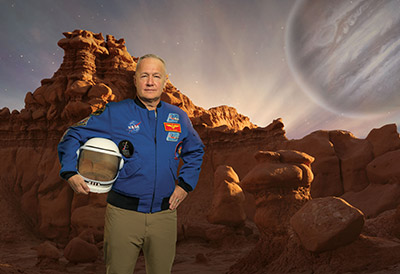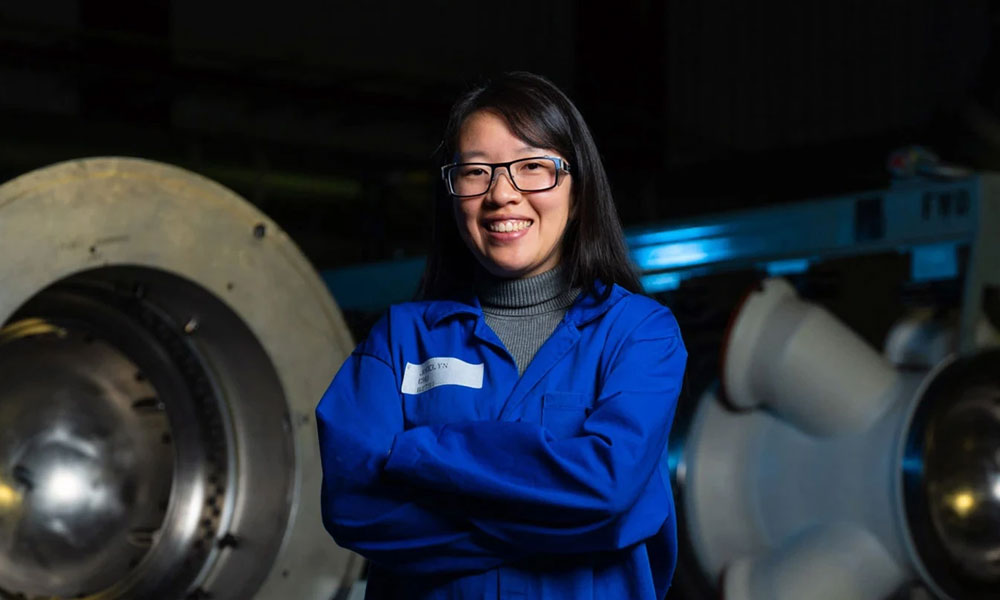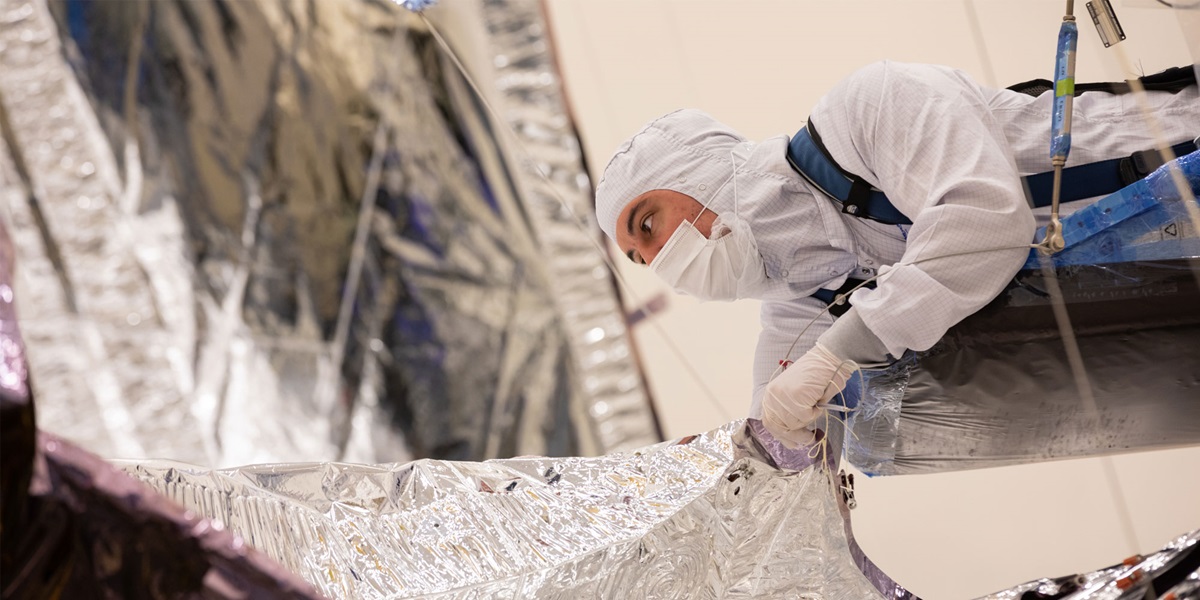By Brandon Hartman, Brad Herron and Kathy Shafer

Fewer than 600 people have experienced what it’s like to be an astronaut, and several of them have worked at Northrop Grumman. In this roundtable discussion, Doug Hurley, Kent Rominger and Rick Mastracchio discuss their career paths, which have taken them everywhere from outer space to Northrop Grumman. For Doug, his career has most recently taken him to the White House where he was awarded with the Congressional Space Medal of Honor for his contributions to America’s space programs, including his service as Spacecraft Commander of NASA’s SpaceX Demonstration Mission-2 (Demo-2).
Tell us about your journey to becoming an astronaut.
Doug Hurley, director of Business Development: After several years as an F/A-18 Hornet pilot, a squadron commander asked me if I was interested in becoming an astronaut, and that’s what got it all started. I ultimately got the call in July 2000 while I was in Canada with my dad. During the trip, my dad asked if I had heard from NASA, and I realized I’d missed a call from Charlie Precourt, a former astronaut and Northrop Grumman retiree. When I called back, I learned I’d been selected, along with 16 others. It was a special moment because my dad and I were together.
Kent Rominger, director of programs: While flying fighter jets for the Navy, I learned that being a test pilot made you competitive to be an astronaut; I decided, ‘Hey, I think I want to do that.’ I applied to NASA in 1990, but didn’t get selected, so I went back and flew during Desert Storm. I applied again and I was doing an exercise at Nellis Air Force Base in 1992 when I got a message to call NASA. I thought I was going to get turned down again, so I waited for over an hour before I called, but I was selected after all. (Editor’s note: Kent retired from Northrop Grumman in 2022.)
Rick Mastracchio, director of Business Development: While I was working in Connecticut as a young engineer, my wife saw an advertisement in a magazine looking for shuttle astronauts and, until that point, I’d never considered it. I made it my goal, and while I didn’t get picked at first, I was hired to work as an engineer at the NASA Astronaut Office in Johnson Space Center. I worked alongside astronauts as an engineer and a flight controller, demonstrating my skills and showing NASA leadership how I performed. In the background, I also completed a second master’s degree and my pilot’s license. When I was finally selected, about ten years after I first applied, I remember thanking them, hanging up and sitting there in a daze. Convinced that I had dreamed the call, I called them back to double check it was real!
Throughout your astronaut career, what are some of your most significant memories?
Doug: The best part of working for NASA was meeting my wife, Karen Nyberg, a former astronaut and classmate. Beyond that, I spent the last eight years of my astronaut career working with the Commercial Crew program, culminating with me commanding the first test flight of the SpaceX Crew Dragon. It was planned to be a 10-day flight, but a few months prior to launch, NASA decided that our mission would be longer so that we could support the International Space Station (ISS) operations. We ended up staying on the ISS for a little over two months, which was an unexpected surprise but very rewarding.
I also remember strapping the crew of Columbia into the vehicle in 2003 prior to their launch, flight and the eventual disaster. That is a very distinct memory for me.
Rick: Learning how to fly the Russian Soyuz was the most challenging. A Soyuz is simpler than the space shuttles we used at NASA, but they are manually flown, and learning to fly and dock one — while speaking Russian — really pushed my brain well beyond anything I’d ever done.
My favorite memories are, of course, my space walks. I was fortunate to do nine, and there is nothing like working in the vacuum of space — the views are fantastic.
What career advice would you give someone trying to become an astronaut or otherwise?
Doug: An astronaut career is typically a second, third, sometimes fourth career. Your prior careers ought to be something you are passionate about and do very well. Having multiple and higher degrees — as all of us do — never hurts because the competition is extremely stiff. When you are passionate, you bring so much more to the table, whether it’s building houses or building rockets. Be exceptional whenever you can.
How did your astronaut career shape your career beyond?
Doug: I’d visited Northrop Grumman and was always impressed; I saw the importance of what Northrop Grumman provides to NASA. I’m still new to the private sector — I joined Northrop Grumman in late August 2021 — so I’m learning how this business is different from the government, but I’m able to relate to the work here because of my astronaut experience.
Kent: As an astronaut, I saw how the Challenger accident shaped Northrop Grumman heritage company Thiokol, which developed the shuttle’s solid rocket motor. I saw extreme professionalism — and saw how the company was willing to work hard for safety — and it really stood out. When I joined Northrop Grumman (then ATK) in 2006, I was even more impressed with how seriously we treat safety and how hard we work to ensure our products are as safe as they can possibly be. I am very proud to be a part of this company.
Rick: Astronauts study every system down to the smallest component, understanding how things work, how they fail and how to respond to those failures, and this prepares us for highly complex technical systems and managing technical teams. I never thought I’d leave NASA, but eventually I wanted to do something different. I was onboard the ISS when the first Cygnus spacecraft arrived and today directly support that program as part of the Human Exploration and Operations team. I feel lucky to have landed at Northrop Grumman.

Life at Northrop Grumman: Recent Stories
Shape your career journey with diverse roles and experiences that expand your expertise, feed your curiosity, and fuel your passion.

Life at Northrop Grumman: Archived Stories
It takes every one of us to make the impossible a reality. See what life is like at Northrop Grumman.